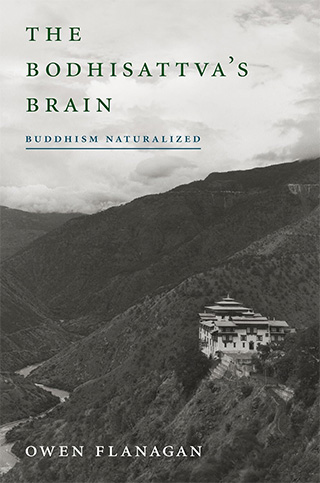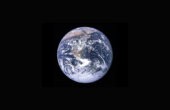The Metaphysical Foundations of Buddhism

In “The Bodhisattva’s Brain: Buddhism Naturalized,” philosopher Owen Flanagan explores whether a major spiritual tradition can be reconciled with a thoroughly scientific worldview. Rejecting supernaturalism, Flanagan presents a version of Buddhism that remains both ethically serious and existentially rich, while remaining fully compatible with contemporary science and philosophy. In the excerpt that follows, he examines how Buddhism diverges sharply from theistic traditions by denying the existence of a creator God and a permanent self. Drawing on metaphysical concepts like dependent origination and anatman (no-self), he argues that these doctrines not only make internal sense within Buddhist thought but also resonate with modern scientific understandings of consciousness and the cosmos.
Buddhism originated in 500 BCE when Siddhartha Gautama, or simply Buddha, gave his inaugural address at Deer Park, near the outskirts of Benares, India (now called Varanasi). Depending on how one understands the orthodox Vedic or Indic spiritual tradition of that time, Buddhism was either a complete break with that tradition or a development of it.1 Buddhism rejects the caste system on ethical grounds. More interesting to those who think of religion as requiring belief in divinity, Buddhism rejects both the idea of a creator God and an immutable, indestructible soul (atman), on logical and empirical grounds.

That said, traditional Buddhism is chock full of ghosts, spirits, devils, deities, heaven and hell realms, and rebirths according to karmic laws that govern the universe. Even if contemporary secular Westerners see Buddhism as compatible with Enlightenment philosophy, many Asian Buddhists, especially the Tibetan variety, do not.
Buddhism rejects the reigning Vedic conception of Brahman as the prime mover,2 and it also rejects the idea that each individual houses an unchanging self or soul. Beyond this, many familiar Indian ideas are retained and developed in Buddhism — although, in certain quarters, and only recently, with hesitancy. This legacy includes the deep importance of the appearance-reality distinction, the idea of reward for virtuous action (karma), the idea that suffering (dukkha) defines the human predicament (samsara) and that liberation is possible (nirvana) through enlightenment (panna; Sanskrit: prajna, bodhi) and virtue (sila, karuna), as well as the ideas of reincarnation or rebirth.
Let me stick with the two metaphysical beliefs that Buddhism rejects: a creator God and a permanent self or soul. First, Buddhism sees right through the familiar problems with cosmological and design arguments for the existence of God. Such arguments beg the question of the origin of the creator or designer. To say that the prime mover always was or is self-creating and self-sustaining is to accept the infinite regress of causes (this one a causa sui) that such arguments are designed to make evaporate, which they reject as a possibility. If God always is and shall be, then God itself is infinitely regressive.
When the Dalai Lama listens to the story of the Big Bang occurring 14 billion years ago, he says fine “but not, of course, the first Big Bang.” This response is hardly a rejection of our theory of the Big Bang. The Dalai Lama sees the Big Bang theory as itself inadequate because it is not deeply causal enough. Some scientists themselves are now wondering if a better story doesn’t involve less of a singular, original bang than an origin for this universe that involves an open wormhole from another parallel universe, with these other universes or their ancestors — possibly comrades in a vast, even infinite, multiverse — being beginningless.
Buddhism sees right through the familiar problems with cosmological and design arguments for the existence of God.
Cosmologists will sometimes say one can’t ask what there was before the singularity banged or how the singularity got there. What they mean is that “time,” as physics understands it, begins (or becomes a useful concept) with the Big Bang. But this hardly makes the sense behind the question go away. Thus other cosmologists will admit the legitimacy of the question and say they have no clue as to how to answer it. Buddhism is comfortable with an infinite regress of natural causes. Indeed, the idea fits well with the metaphysical idea of dependent origination, according to which everything that happens depends on other things happening.3
The rejection of the Vedic (Indic) doctrine of atman, the idea that humans are possessors of an immutable, indestructible self or soul, comes from two lines of thought. First, there is the idea of dependent origination that I have just mentioned. Everything is in flux and all change is explained by prior change. The principle is universal and thus applies to mind. Next bring in experience or phenomenology: One will see that what one calls “the self” is like many other natural things, partaking of certain relations of continuity and connectedness. My conscious being is much more streamlike than it is like Mount Everest (which is also part of the flux, just less visibly so). Conventional speech allows us to reidentify each person by her name as if she is exactly the same over time.
But in fact identity is not an all-or-nothing thing. Personhood is one kind of unfolding. The Himalayas are a very slow unfolding (one answer to how long it takes to reach final enlightenment is as long as it would take for a mountain range 84,000 times larger that the Himalayas to erode if touched once a day with a soft cloth!); humans are a faster unfolding than the ordinary Himalayas; drosophila unfold much more quickly. Each kind of thing in the cosmos is an unfolding in the cosmos, the eternal Mother of all unfoldings, and has a temporal span during which it can be said to be what it is — a mountain range, a person, a fruit fly — and after which it ceases to have enough integrity to be said to be the same thing, itself. At such a transition point, we say the thing, event, or process is gone, over, dead, that it has passed, passed on, or passed away.
This is the doctrine of anatman, no-self. Nothing is permanent, even things that seem so, aren’t. If properly understood the view is not nihilistic. One of my students once asked in a very disturbed manner, “If I am not myself who the fuck am I?” I am happy to report that further therapy about the meaning of the doctrine of anatman calmed him. Indeed, in the West a very similar view is widely held from Locke to the present. And it fits nicely with contemporary mind science. Furthermore, the doctrine of anatman suits Buddhist ideas that persons can in fact transform themselves, become enlightened, and so on. If one’s nature is, as it were, immutably fixed, it is hard to see how self-transformation is possible.
Owen Flanagan is a professor of philosophy and neurobiology emeritus at Duke University. He is the author of several books, including “The Bodhisattva’s Brain,” from which this article is excerpted.
- The oldest Vedas date to 1500 BCE and do not include the Upanishads and the Bhagavad Gita. The Upanishads date from the sixth century BCE. The Bhagavad Gita is included in the Mahabharata Epic, written from the fourth century BCE to the fourth century CE, but the Bhagavad Gita is thought by many, perhaps most scholars, to be a late text composed possibly entirely in the Common Era. In any case, the latter are the key texts of what came to be known as Hinduism. Hindus don’t typically call their religion Hinduism (although they may call themselves Hindus as a sort of ethnic attribution). The name originates most likely in the desire of British colonialists to name their—the Indians’—religion/spiritual practices something. So Buddhism did not come from Hinduism, because whatever exactly Hinduism is or names, it comes after Buddhism. To make matters worse, the English word Hindu is almost certainly based on a mispronunciation that relates to the importance of the Indus (not Hindus’!) river. To describe their spiritual practice, Hindus sometimes use the word darshana, which is best translated as “philosophy.” Often they refer to their way as Santana Dharma, the eternal way of truth. There is no Hindu Pope. It is not a creedal faith with a single orthodox doctrine. There is no Buddhist Pope either. Buddhism is also not a creedal faith with a single orthodox doctrine. That said, every spiritual tradition has some commitments that constitute the minimal conditions of being a member, advocate, and so on. A traditional Tibetan textbook, Cutting through Appearances, says, “The definition of a proponent of Buddhist tenets is: a person who asserts that the four seals which are the views testifying that a doctrine is Buddha’s. The four seals are: 1. All compounded phenomena are impermanent; 2. All contaminated things are miserable; 3. All phenomena are selfless; and 4. Nirvana is peace.”
- Brahman is the name for the ultimate, self-sustaining source of all creation. But “it” is not a person. Furthermore, many Hindus conceive their elaborate pantheon of gods, even high Gods like Brahma (creator of earth but not everything; that is Brahman’s role), Vishnu (loving protector), and Shiva (fierce protector) as “aspects” on the one and only God, Brahman. Hints of Spinoza.
- The Dalai Lama (2005, 92–93) writes: “Even with all these profound scientific theories of the origin of the universe, I am left with questions, serious ones: What existed before the Big Bang? Where did the Big Bang come from? What caused it? Why has our planet evolved to support life? What is the relationship between the cosmos and the beings that have evolved within it? Scientists may dismiss these questions as nonsensical, or they may acknowledge their importance but deny that they belong to the domain of scientific inquiry. However, both these approaches will have the consequence of acknowledging definite limits to our scientific knowledge of the origin of our cosmos. I am not subject to the professional or ideological constraints of a radically materialistic worldview.… And in Buddhism the universe is seen as infinite and beginningless, so I am quite happy to venture beyond the Big Bang and speculate about possible states of affairs before it.”



